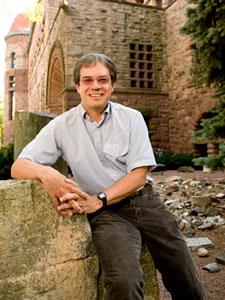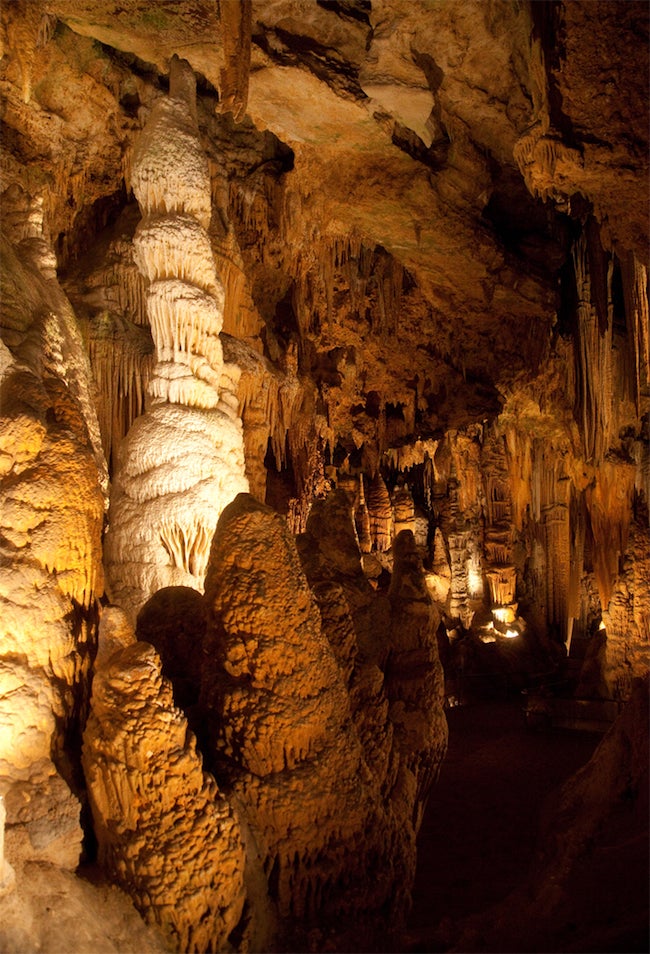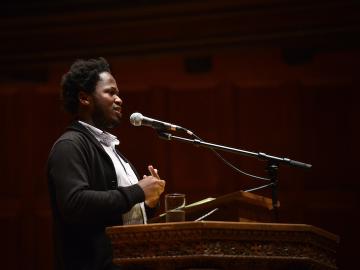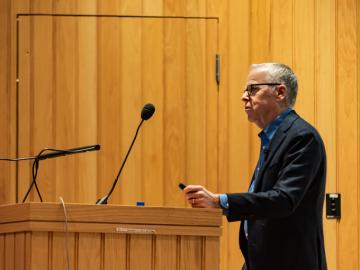Campus News
Underground Clues to Climate Change
November 13, 2013
Cynthia Nickoloff

Photo credit: University of Minnesota
What are the causes of abrupt climate change? What is behind the rapid melting of ice sheets at the end of glacial cycles? What role do humans play in climate change?
Isotope geochemist R. Lawrence Edwards looks underground to answer such questions, championing cave deposits as recorders of historic and prehistoric climate. He'll discuss his research and results when he delivers a series of lectures, Deciphering Climate Change, on campus November 14, 15, and 21.
The Robert D. and Carol C. Gunn Professor and Distinguished McKnight University Professor in the University of Minnesota’s earth sciences department, Edwards and his large group of international collaborators are currently working on piecing together hundreds of thousands of years of Asian monsoon history from caves in China. Using innovative strategies, he relates his cave climate histories to those from ocean sediments and from ice cores, thereby establishing patterns of changing climate in time and space. Some of his research assesses the relationship between climate change and cultural history, drawing

plausible links between global shifts in rainfall patterns and major cultural changes. His cave records, which cover the last several centuries, contain some of the strongest evidence yet for human-induced climate change.
“Modern data show quite clearly that the climate is changing, and there is broad scientific consensus that human activities are responsible for much of the change that is happening right now,” says F. Zeb Page, associate professor of geology at Oberlin.
“We know that over geologic time the Earth's climate has changed quite a bit without human help. To understand our part in the current climate-change predicament, we must establish a baseline of natural change. Professor Edwards’ work allows us to precisely determine the age of thinly layered limestone found in cave deposits back 700,000 years. These rocks serve as a detailed record of climate and can be tied to other climate-change drivers such as changes in the Earth's orbit.”
Edwards will present his lectures at Oberlin under the auspices of the National Academy of Sciences’ (NAS) Arthur L. Day Prize Lecture Series. The NAS awards the Day Prize every three years to “a scientist making lasting contributions to the study of the physics of the Earth and whose lectures will provide solid, timely, and useful additions to the knowledge and literature in the field.”
Edwards’ says he chose Oberlin—rather than a large research university—as the site for his lectures because he “thought the topic of climate history would be of interest to undergraduates and appropriate for presentation at the undergraduate level.
“There are several strong geology departments at small liberal arts colleges, including Oberlin’s department, and Oberlin was among the schools I considered on the basis of the strength of its program,” he says. Edwards also notes his family ties to Oberlin: his mother was dean of students for the Chengdu campus of the Oberlin-in-China program at the time of the Communist takeover in 1949 and early 1950, and he has a child currently enrolled at Oberlin.
You may also like…
Attorney Josh Nolan is 2022 Constitution Day Speaker
Oberlin's former interim general counsel will give insights on how constitutional issues impact students.
This Week in Photos: In Celebration of Returning Black Alumni
Author Ishmael Beah ’04 returned to Oberlin College in 2010 to discuss the publication of his New York Times best-selling book, A Long Way Gone, Memoirs of a Boy Soldier. Four years later Beah’s visit to Finney Chapel took place after the publication of Radiance of Tomorrow, A Novel, which would go on to become another best-seller. Beah’s visits to campus serve as inspiration for this week’s photo series.
Convocation Speaker Touches on the Future of Journalism
Tom Rosenstiel ’78 is one of the country’s most recognized thinkers on the intersection of media and politics and the future of journalism. He recently discussed President Donald Trump’s relationship with the media, the meaning of objectivity, and why and how we all may perceive “facts.”


